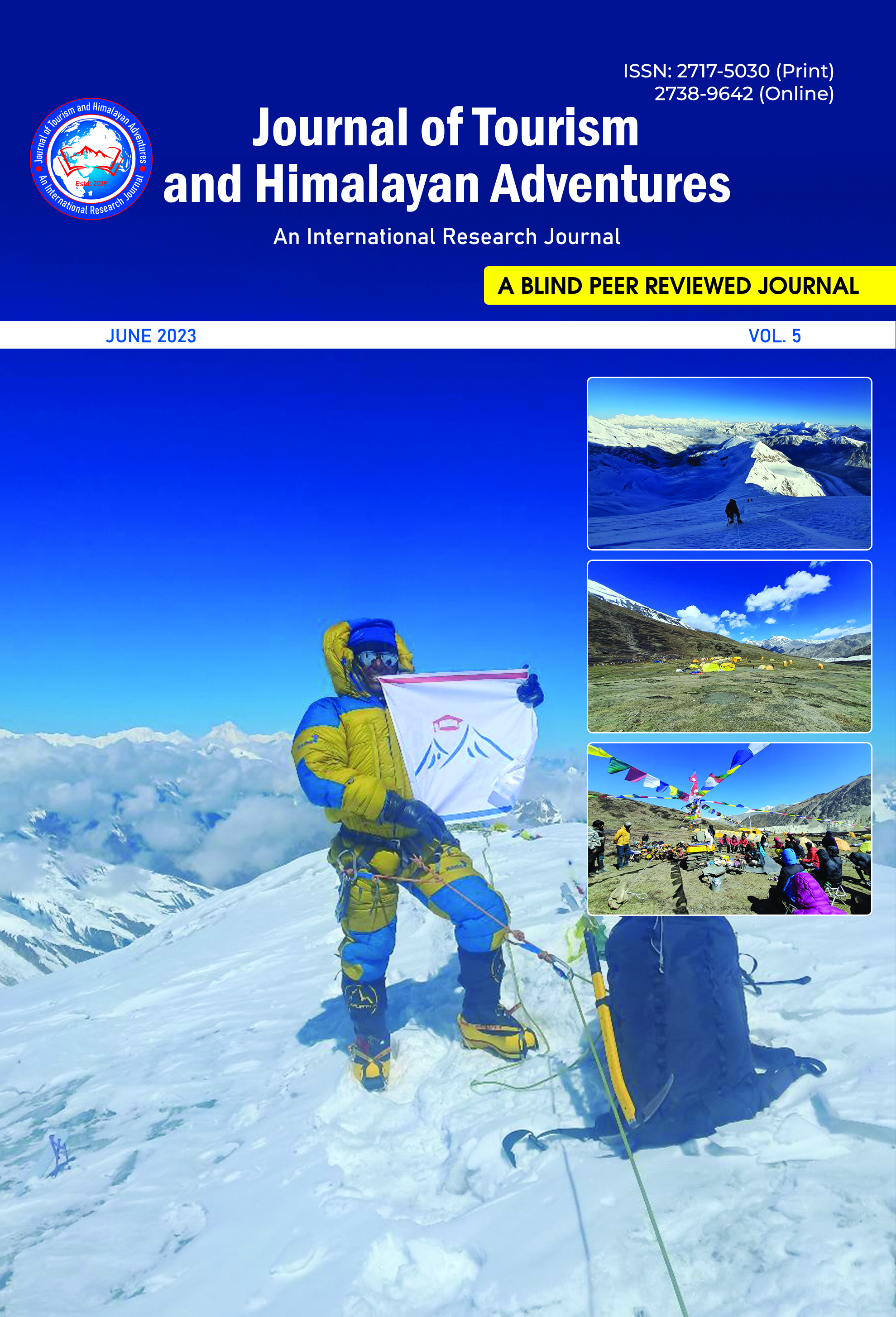Assessment of the Development of Geotourism and Ecotourism in the Pokhara Valley, Nepal
DOI:
https://doi.org/10.3126/jtha.v5i01.56174Keywords:
geotourism, ecotourism, geomorphology, natural resources and conservation, anthropology culturalAbstract
This project was conducted in Pokhara, Nepal, to find the potential of geoheritage sites and to supply avenues for sustainable development and education. We assessed five tourist locations on their potential for geotourism and seven sites for their ecotourism practices. The geotourism quantitative assessment and degradational risk assessment used a survey developed by Brilha (2016). A modified version of the questionnaire created by Baral, et al. (2012) was used to evaluate locations for their ecotourism ability in combination with the 5 general Principles of Ecotourism. The study appraised Pokhara for its geodiversity, geological heritage, and ecological conservation in line with UNESCO’s list of attributes for aspiring Geoparks (aUGGp). These areas had high scores in geological diversity and geosite potential that may benefit from increased resources to support overall geological education and conservation as an aspiring UNESCO Global Geopark. This study aims to provide resources for tourists at these tourist locations with information on relevant geologic morphology, lithology, eco-conscious procedures, and conservation mitigations, as well as geo- and cultural history. The infographics included in the supplemental materials also aims to educate tourists on how to better take part in geotourism and conservation efforts in the Pokhara Valley of Nepal.




